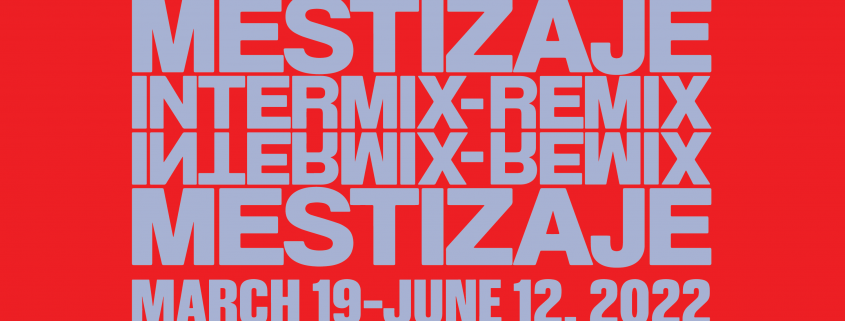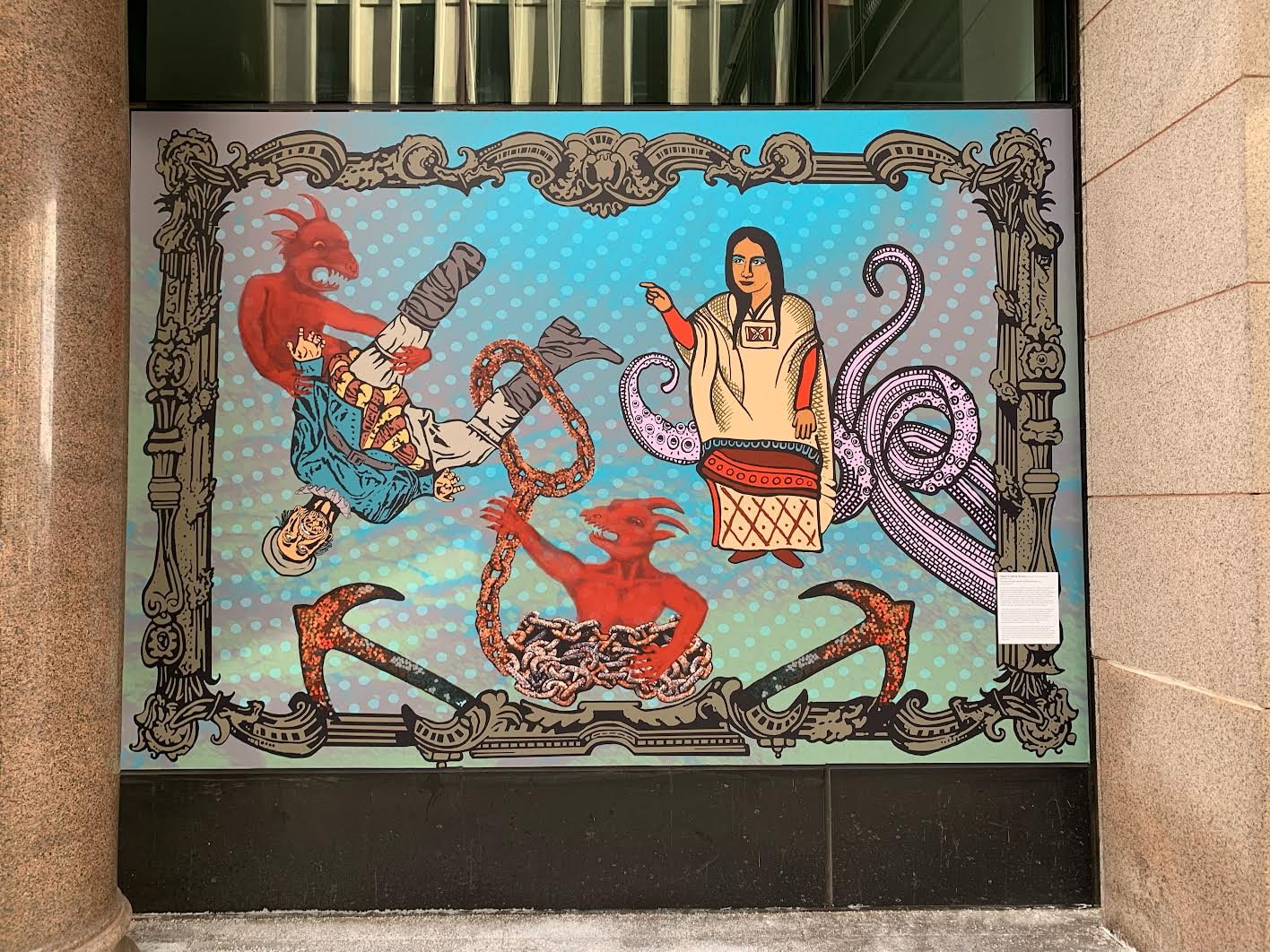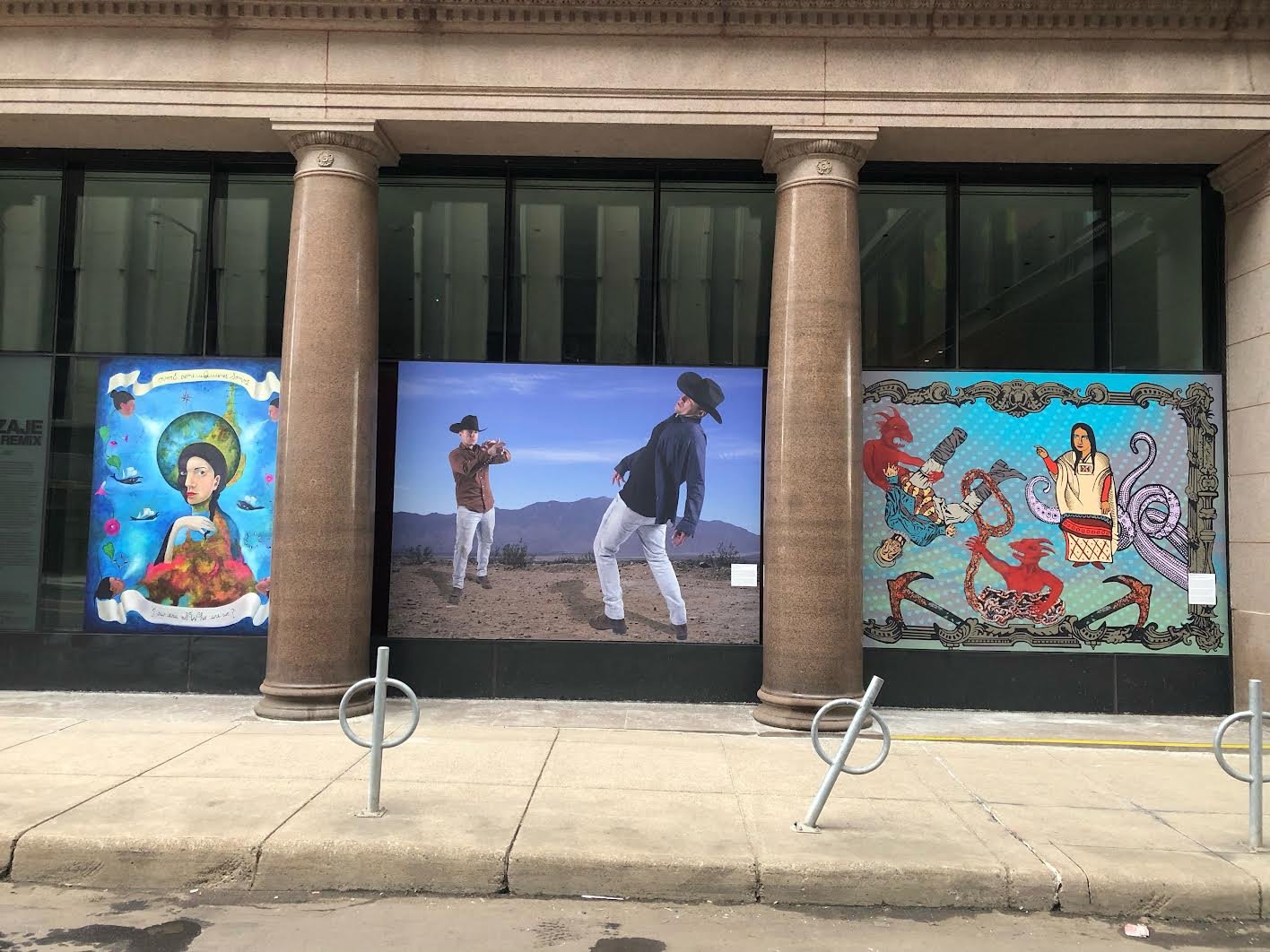MESTIZAJE: INTERMIX-REMIX
Robert and 4th streets and Skyway Ecolab Entrance
March 19–June 12, 2022
In Mestizaje: Intermix-Remix, eight Latinx artists (identifying as Chicano, Chilean, Colombian, Mixteco, Mexican, and Mexican-American) explore what it means to claim a mixed-race identity consisting of both Indigenous and European descent.
The concept of mestizo (having Spanish-Indigenous ancestry) originated in the sixteenth century as part of a racial designation system created by Spanish and Portuguese colonizers in what is now considered Latin America. Today, the violent and lasting impacts of colonization can be difficult to fully comprehend.
Without seeking definitive conclusions or definitions, artists Marcela Rodríguez Aguilar, María José Castillo, Luis Fitch, Bobby Marines, Dougie Padilla, Maria Cristina Tavera, Xavier Tavera, and Vlocke Negro explore questions of ancestry and identity.
This exhibition, on view in the M’s public-facing windows and skyway entrance, is the first iteration of a long-term collaboration between the M and the art collective Grupo Soap del Corazón (art that cleanses the heart). Grupo Soap has been centering artistic expression of Latinidad in the Midwest for more than twenty years. The collective advances the work of local, national, and international Latino/a/x artists with the intention of inspiring political, economic, and racial justice through the doorways of art. Curated by Dougie Padilla and Xavier Tavera, founders of the artist collective Grupo Soap del Corazón.
Learn more about Grupo Soap del Corazón here.
In an interview with Carleton College, Xavier Tavera said, “Mestizaje is a word that the Spaniards came up with when they arrived. It’s a colonizing word, and it means mixed. The exhibition asks, ‘What does it mean to be mestizo?’ What does it mean that we are part of two cultures? How do we assimilate that? Repel it? Fight it? There are a lot of questions, and there is a constant fight in our bodies and in our minds.”
Maria Cristina Tavera
Unanchored and other conflated issues, 2022
vinyl reproduction
In Unanchored and other conflated issues, Maria Cristina Tavera illustrates an interaction between Spanish conquistador Hernán Cortés and La Malinche, an enslaved Indigenous woman who became Cortés’ interpreter, guide, and mistress. Originally known as Malinalli, Malintzin, or Doña Marina, La Malinche’s reputation has shifted throughout time, especially after the early nineteenth century when Mexico reclaimed its independence from Spain. She became widely regarded as a traitor for aiding Cortés in the conquest of Mexico. Yet, as the mother of his son, La Malinche has also represented the original ancestor of mestizos.
Inspired by Spanish depictions of La Malinche during the colonial period, Tavera shows her pointing at Cortés in an accusatory manner while he becomes entangled by two anchors. The anchors are controlled by demons and symbolize Cortés’ pursuit to plant himself in another land through violence. In contrast, La Malinche, a victim and survivor of enslavement, is caught by winding tentacles, suggesting her life’s predetermined circumstances led her to abet Cortés.
In 2019, five hundred years after the Spanish conquest, two ship anchors were discovered off Mexico’s Gulf Coast that may have belonged to Cortés’ fleet. As more information about the Spanish colonization of what is now known as Latin America surfaces, many people of mestizo ancestry experience an inner struggle when coming to terms with having both colonized and colonizing ancestors and navigating society as a person of mixed race.
Minnesota Museum of American Art
For more information regarding the eight artists: Mestizaje artists


